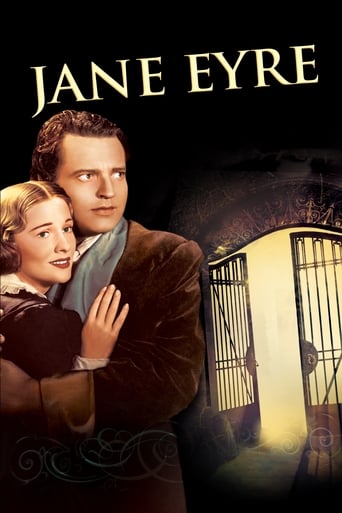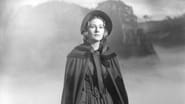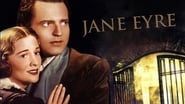Martin Bradley
One of the most successful of all the literary classics to have made it to the screen and certainly the best of all the "Jane Eyre" adaptations. The credited director is Robert Stevenson but visually this has all the hallmarks of an Orson Welles picture. He's a splendid Rochester while Joan Fontaine is perfectly cast as Jane, (after "Rebecca" it may be her best performance), and it has a first-rate supporting cast that includes an uncredited 11 year old Elizabeth Taylor as the little girl who dies. The unusually literate screenplay is by Aldous Huxley, John Houseman and Stevenson and the superb cinematography is by George Barnes.
k-lance2
"Jane Eyre" starring Orson Welles, Joan Fontaine, and Margaret O'Brien is a gret film. It is a very powerful film and shows how poorly Jane is treated her whole life. I really enjoyed the cinematography and thought that this movie displayed that pretty well.Joan Fontaine played an exceptionally well role in the movie as Jane Eyre. She played the role of a girl who was treated poorly and had a bad life because back then that's how society was. I really enjoyed this movie because at first it seemed like it was going to be a bad movie and then it becomes a sweet and romantic movie and that really surprised me.
Ed Uyeshima
According to IMDb, there are at least a dozen versions of "Jane Eyre", an obvious testament to the durable appeal of Charlotte Brontë's Gothic novel, but the 1944 version is the one to which I always seem to return again and again. Having played a similar "ugly duckling" role in Alfred Hitchcock's "Rebecca" four years earlier, Joan Fontaine is in her element in the title role and performs with her impeccable restraint intact. However, it's Orson Welles who generates all the fascination about this particular adaptation. Coming off of his twin masterpieces, "Citizen Kane" and "The Magnificent Ambersons", he is officially just the leading man here, and he almost overwhelms the film with his outsized performance as Edward Rochester, generating a brooding sensuality with his surly charisma and stentorian baritone voice. Even though he is not credited as the director (that was Robert Stevenson who later made "Mary Poppins"), Welles' distinctive filmmaking style is prevalent everywhere.From the gloomy ambiance that seems to whisper "Rosebud" to the heavy use of shadow, the distorted camera angles, the moody black-and-white cinematography from George Barnes who lensed "Rebecca", and the evocative score by Bernard Herrmann - this feels like an uncredited Orson Welles production. Adapted by an impressive group of writers - John Houseman, Aldous Huxley, Henry Koster and Stevenson - the story follows Jane from her desolate childhood as an orphan raised by an insensitive aunt, Mrs. Reed, through her lonely years at the Lowood Institution, a charitable school where she was a headstrong pupil whom the school offers to hire as a teacher when she comes of age since she would be a cheap hire. However, she can't wait to escape and leaves to become the governess to an excitable French child named Adele Varens, the ward of Rochester, a tortured, imperious man who lives as a near- recluse at his estate, Thornfield Manor. Jane immediately falls in love with the sullen Rochester, but to the manner born, she cannot admit this to him. He dallies with an avaricious socialite but eventually finds himself reciprocating Jane's feelings for him and proposes to her.In the middle of their wedding ceremony, it comes to light that Edward is already married to a violently insane woman locked in the tower of his estate. The rest of the Victorian-era story deals with how Jane responds to this most unfortunate situation which of course, means a lot of sturm und drang. During the prime phase of her lengthy career, Fontaine was at her most effective in conveying a coiled passion under a becalming veneer, and that's what makes her an ideal Jane. There are excellent supporting turns from Henry Daniell as Mr. Brocklehurst, the cruel headmaster of Jane's school; Agnes Moorehead, one of Welles' most valued Mercury Players, as Mrs. Reed; Margaret O'Brien sprightly as Adele just before her more memorable turn as Tootie in "Meet Me in St. Louis"; and Peggy Ann Garner genuinely spirited as the younger Jane. It's also hard to miss an unbilled Elizabeth Taylor, striking as ever at ten, as the doomed orphan Jane befriends as a child. The one flaw with the 97-minute film is the truncated ending which resolves everything far too quickly. But watch this classic for Welles' mesmerizing performance. It's a knockout.The 2007 DVD has a superb restoration and contains some solid extras such as two audio commentary tracks. The first is with Welles biographer Joseph McBride lending insight and O'Brien (she must have been around 70) providing personal recollections of the production. It's more interesting that than the second commentary track which has film historians Nick Redman, Steven Smith, and Julie Kirgo trading trivia about the source novel and the film. Also included are a musical-score- only track; an eighteen-minute, behind-the-scenes featurette, "Locked in the Tower: The Men Behind Jane Eyre", which has film historians and others discussing the production from various angles; a 42-minute U.S. War Film Department propaganda piece directed by Stevenson called "Know Your Ally Britain"; an interesting restoration comparison; and galleries of production stills, storyboards, and film posters. It's an excellent package for collectors of classic films.
marspeach
My first impression- it was very Gothic. Quite dark and ominous with eerie music adding to the look and feel. This was quite a stark contrast to the 1934 version, that's for sure! It was much more faithful to the novel than 1934, but it still changed quite a bit as well.I found Joan Fontaine to be slightly too subdued in her performance as Jane. I know Jane is suppose to be reserved, but I think it was taken too far- almost to her having no emotions at all. Orson Welles as Rochester's performance stressed Rochester's dark and troubled side- completely ignoring the character's sense of humor. Once again, stressing the Gothic elements.Look out for a very young Elizabeth Taylor in an uncredited role as Helen Burns! This version was certainly more faithful than 1934 and much better made on the whole, yet I'm afraid I don't share the love a lot of people seem to have for it. It still changed a bit too much for me and was at times overly dark.








